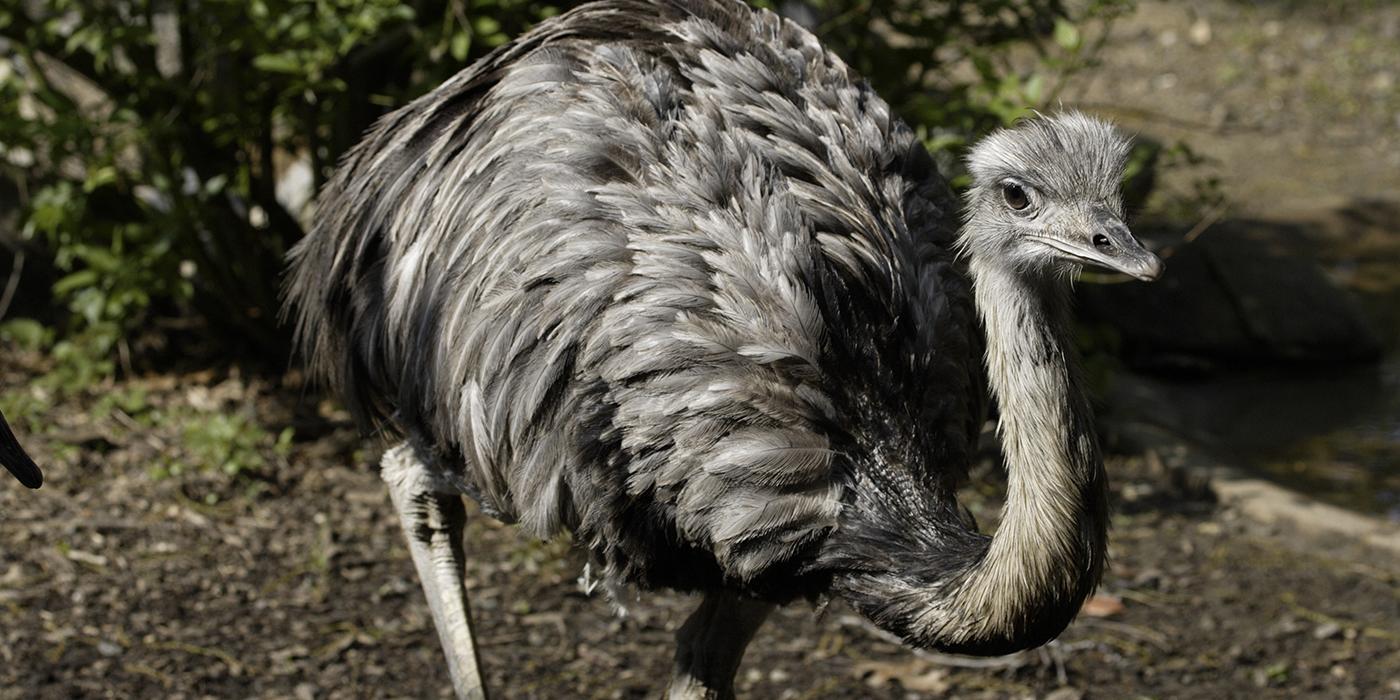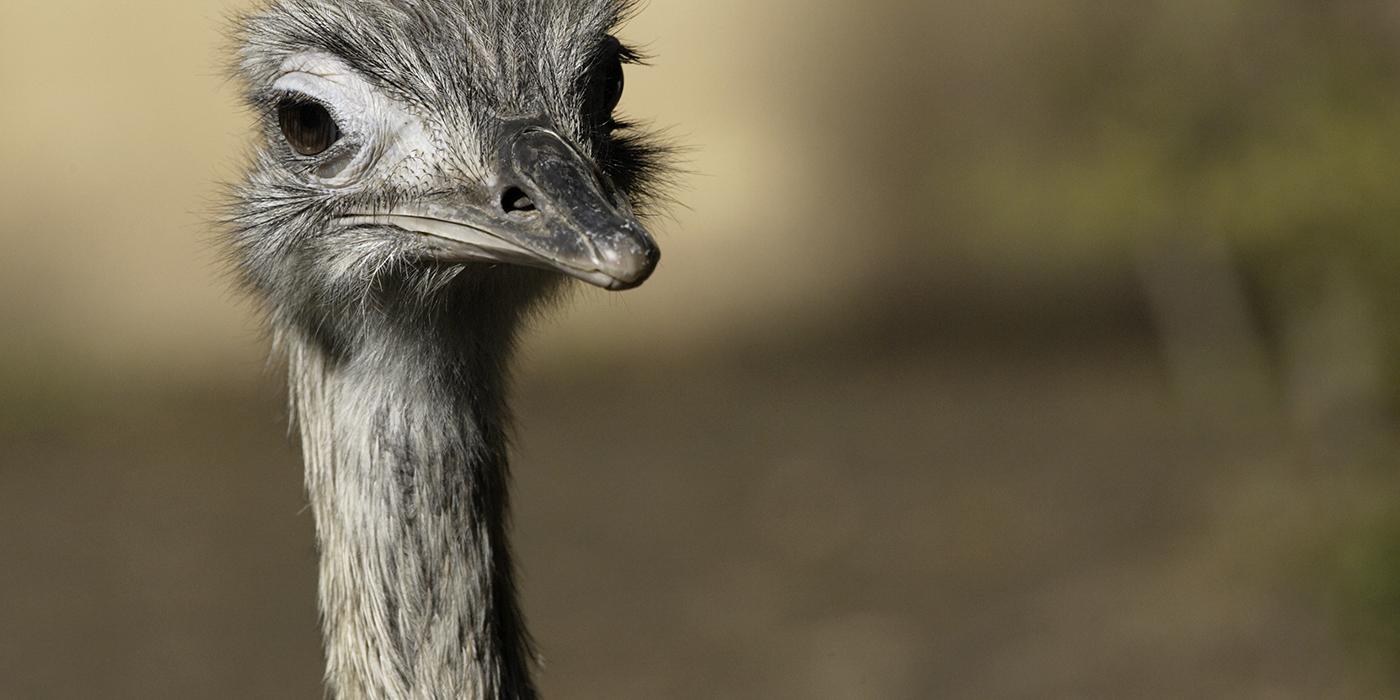Physical Description
Although rheas look similar to ostriches, they are much smaller. They also have three toes on each foot, while ostriches have two. The rhea has a long neck and long legs. A rhea's head, neck and thighs are covered with feathers, but the bird has no tail feathers. Its plumage is mostly gray and brown with white underparts.
Rheas cannot fly, but they have unusually long wings for flightless birds. They use their wings like an airplane rudder to help them dodge predators and for balance while running.
Size
Rheas are the largest South American bird. They weigh between 33 and 66 pounds (15 and 30 kilograms) and stand 3-5 feet (0.9-1.5 meters) tall. Males are typically larger than the females.
Native Habitat
The greater rhea is found in southeastern South America, including Brazil, Bolivia, Uruguay, Paraguay and Argentina, where it lives in grassland and semiarid scrubland. During the breeding season, rheas stay near rivers, lakes or marshes. They occur on upland and lowland plains in most parts of South America.
Food/Eating Habits
Rheas are omnivorous, preferring broad-leafed plants and clover. However, they eat a variety of seeds, roots, fruits, insects and small vertebrates, such as lizards, frogs, small birds and snakes. Rheas continuously move as they feed.
Social Structure
Rheas generally live in groups, although breeding males are solitary for part of the year.
Reproduction and Development
Their breeding season is from August to January, depending on the region. Males develop a dark collar at the base of their neck during the breeding season. They call females with a booming call and court two to 12 females with an impressive wing display. Once mating has occurred, the males build nests, which are shallow depressions in the ground.
Each of the females lay up to five gold- colored eggs in the male's nest over a period of seven to 10 days. They can lay up to 60 eggs total. The male incubates the eggs for about six weeks and cares for the chicks alone. When male rheas are taking care of their young, they will charge at any creature that comes too close to them, including female rheas and humans.
Conservation Efforts
The rhea population has suffered through hunting and habitat loss, although it is still relatively abundant. In 1980, more than 50,000 skins were traded. However, a permit is now needed for their export and import.
Rheas are considered pests near agricultural areas, because they will eat almost any crop.
Help this Species
Be a smart consumer! Avoid animal-skin products, even those marked “faux,” to ensure you’re not contributing to the illegal hunting of this species.
Practice ecotourism by being an advocate for the environment when you’re on vacation. During your travels, support, visit or volunteer with organizations that protect wildlife. Shop smart too! Avoid buying products made from animals, which could support poaching and the illegal wildlife trade.
Share the story of this animal with others. Simply raising awareness about this species can contribute to its overall protection.
Smithsonian's National Zoo and Conservation Biology Institute. (n.d.). Greater rhea. Retrieved January 12, 2026, from https://nationalzoo.si.edu/animals/greater-rhea
Animal News




